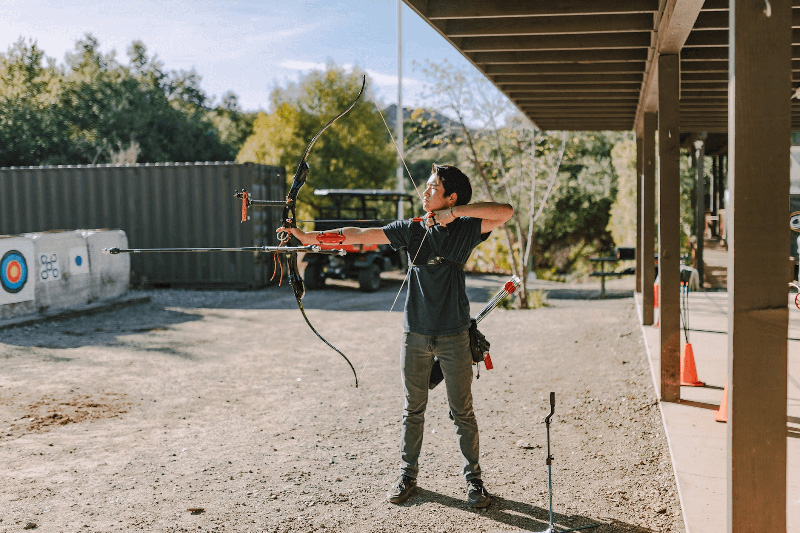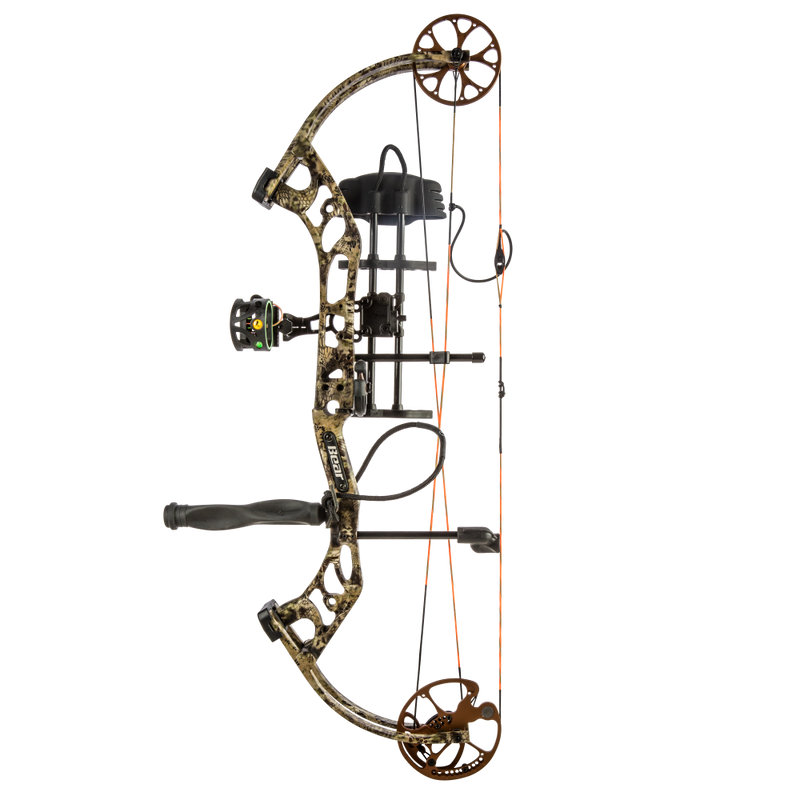The Ultimate Guide to Picking the Right Archery Stabilizer for Enhanced Accuracy
Archery is a sporting activity that demands accuracy and precision, and choosing the ideal tools is vital for achieving ideal outcomes. Among the different devices available, an archery stabilizer plays a considerable function in enhancing accuracy. Nevertheless, with a lot of options on the market, it can be overwhelming to determine which stabilizer is the ideal fit for your needs. In this thorough guide, we will check out the crucial aspects to take into consideration when selecting an archery stabilizer for enhanced accuracy. From finding the optimal size to understanding the different designs and materials, we will look into everything you need to understand to make a notified decision. Whether you are a seasoned archer looking to upgrade your tools or a newbie looking for advice, join us on this trip as we unwind the keys to selecting the best archery stabilizer.
Size: Discovering the Optimal Stabilizer Size
When choosing an archery stabilizer for optimal efficiency,Identifying the ideal stabilizer size is critical. The size of a stabilizer directly impacts the balance, security, and accuracy of the bow. A stabilizer that is as well long can make the bow really feel hard and top-heavy to control, while a stabilizer that is as well brief may not provide sufficient stability and dampening of vibrations. Locating the ideal length needs considering variables such as the archer's shooting style, bow weight, and individual preference.
A longer stabilizer, typically ranging from 8 to 12 inches, can give better stability and minimize bow torque. This is specifically advantageous for archers that fire with a high draw weight or those who have a tendency to torque the bow throughout the shot. The added length assists to disperse the weight equally and counterbalance any torque or motion.
On the various other hand, a much shorter stabilizer, usually between 4 to 7 inches, uses extra ability to move and quicker response. It is favored by archers who shoot with a reduced draw weight or those that call for more mobility, such as hunters or 3D shooters. The shorter length enables easier movement with tight areas and faster changes.
Inevitably, the optimal stabilizer size refers personal choice and shooting style. It is recommended to experiment with different lengths and observe the effects on security and precision. Consulting with seasoned archers or specialists can additionally provide useful understandings and referrals.
Weight: Establishing the Appropriate Stabilizer Weight
After considering the optimal stabilizer length, the next important factor to take into consideration when picking an archery stabilizer is establishing the ideal stabilizer weight - archery stabilizer. The weight of the stabilizer plays a crucial role in enhancing precision and security during the shot
The weight of the stabilizer affects the equilibrium and control of the bow. A much heavier stabilizer can supply enhanced stability and control, especially for shooters with a propensity for unstable hands or irregular shots. It assists to absorb the resonances and recoil generated by the bow, reducing torque and lessening the impact on the arrow's trip.
On the various other hand, a lighter stabilizer enables for a quicker and more receptive bow. It can be beneficial for shooters who focus on ability to move and rate over stability. Lighter stabilizers also lower exhaustion during lengthy shooting sessions or competitions.
To establish the proper stabilizer weight for your requirements, it is essential to consider your capturing style, physical toughness, and bow configuration. Explore various weights and observing the effect on your shooting efficiency is key to locating the ideal equilibrium.
Ultimately, the optimum stabilizer weight will certainly vary for each and every private archer. It is advised to start with a moderate weight and make changes based on personal choice and shooting results. Bear in mind, the objective is to achieve a controlled and stable shot, while also keeping comfort and ease of use.
Materials: Picking the Right Materials for Durability and Efficiency
When choosing an archery stabilizer, it is critical to very carefully take into consideration the products used in its building to ensure durability and optimize performance. The choice of materials can significantly impact the general top quality and effectiveness of the stabilizer.
One of the most frequently made use of materials for stabilizers is carbon fiber. Carbon fiber offers a high strength-to-weight proportion, making it light-weight yet incredibly solid. This material decreases and takes in resonances bow torque, leading to enhanced security and accuracy. In addition, carbon fiber stabilizers are immune to temperature changes and are less likely to warp or bend over time.
One more prominent product for stabilizers is aluminum. Aluminum stabilizers are understood for their resilience and rigidness. They offer excellent dampening capacities, reducing the amount of shock and vibration transferred to the shooter's hand. Light weight aluminum stabilizers also provide a broad variety of customization choices, allowing archers to change the weight and size to suit their preferences.
Some stabilizers are constructed making use of a combination of materials. For instance, a stabilizer might have a carbon fiber core covered in an aluminum covering. This hybrid layout integrates the very best top qualities of both products, providing optimal security, durability, and performance.
Design: Understanding the Various Stabilizer Layouts and Their Effects
Thinking about the products utilized in archery stabilizers, it is very important to now explore the different layouts of stabilizers and their corresponding impacts. The style of an archery stabilizer plays a critical role check my reference in boosting precision and decreasing resonance throughout the shot. There are numerous various styles available in the marketplace, each with its very own unique attributes.

One more prominent design is the side bar stabilizer. This design includes connecting a brief pole sideways of the bow, alongside click for source the primary long pole. Side bar stabilizers assist in counterbalancing the weight of accessories, such as quivers or views, and offer additional stability to the bow.
Some stabilizers come with adjustable weights. These stabilizers permit archers to fine-tune the balance and feel of their bows by including or getting rid of weights. This attribute is especially useful for archers who like a specific weight distribution or wish to explore different configurations.
Furthermore, some stabilizers integrate wetting modern technology to minimize vibration and sound. These stabilizers frequently have built-in dampeners or utilize products that take in vibrations, resulting in a smoother and quieter shot.

Devices: Discovering Additional Devices for Enhanced Stability
These devices are created to function in combination with the archery stabilizer to offer an also greater degree of stability and precision. One such accessory is the V-bar or the side stabilizer install.
One more accessory that can enhance stability is a bow sling. A bow sling is a band that affixes to the bow and allows the archer to maintain a loosened up grasp on the bow deal with without the worry of dropping it (archery stabilizer). This relaxed grasp helps to minimize muscular tissue stress and permits for an extra steady and consistent shot
Furthermore, a stabilizer weight system can be used to adjust the equilibrium and stability of the bow. These weight systems normally contain small weights that can be added or gotten rid of from the stabilizer to adjust the equilibrium factor of the bow. By finding the optimum equilibrium point, archers can achieve an extra secure and precise shot.
Verdict
To conclude, picking the appropriate archery stabilizer entails considering variables such as length, weight, products, style, and extra accessories. The optimal stabilizer size and weight will certainly depend on individual choices and shooting design. Selecting durable materials is necessary for resilient performance. Comprehending the different stabilizer styles will certainly aid boost precision. Discovering extra accessories can better improve stability during archery capturing.
Identifying the ideal stabilizer length is crucial when choosing an archery stabilizer for optimum performance. A stabilizer that is also long can make the bow feel top-heavy and tough to control, while a stabilizer that is too brief may not provide sufficient stability and dampening of resonances - archery stabilizer.Taking right into account the products utilized go to my blog in archery stabilizers, it is essential to now delve right into the various designs of stabilizers and their corresponding results. Side bar stabilizers aid in counteracting the weight of accessories, such as quivers or sights, and provide extra security to the bow
These weight systems commonly are composed of little weights that can be added or gotten rid of from the stabilizer to adjust the equilibrium factor of the bow.
Comments on “Choosing the very best Archery Stabilizer: Tips and Recommendations”